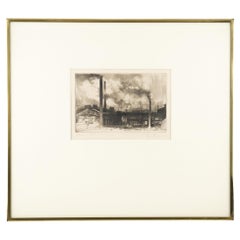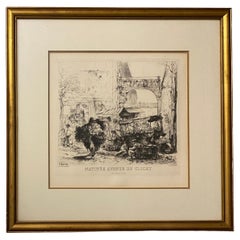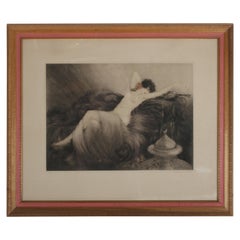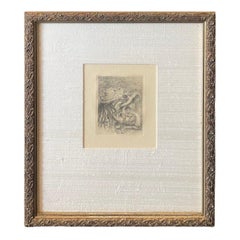Auguste Brouet Furniture
Auguste Brouet was a French etcher and book illustrator. He was born and raised in a poor family in the popular north-east quarters of Paris and in Les Lilas, in the near suburbs. While apprenticed to a lithographer, he struggled for artistic education through the evening drawing classes of Eugène Quignolot, also briefly attending Gustave Moreau's atelier. Starting from around 1895, Brouet would make a living by doing hack work for fashionable artists and also crafting reproductive etchings in color, in the workshop of Eugène Delâtre. Around 1902, he started to devise original etchings, sometimes larger pieces in color, more often smaller works in black and white, as was the growing trend at the time. In the 1920s, Brouet's etchings came under strong demand both in France and in the United States, in the wake of the Print Revival. At that time, he also produced a significant body of book illustrations, most notably for Devambez, under the direction of Édouard Chimot. This period of prosperity ends with the Great Depression, from which the print market never quite recovered. Brouet died in 1941 in poverty.
1920s French Vintage Auguste Brouet Furniture
Paper
19th Century Antique Auguste Brouet Furniture
Paper, Giltwood
1920s French Art Deco Vintage Auguste Brouet Furniture
Wood, Paper
Early 20th Century French Auguste Brouet Furniture
Wood, Paper
1870s French Napoleon III Antique Auguste Brouet Furniture
Paper
Mid-19th Century Antique Auguste Brouet Furniture
Paper
18th Century European Antique Auguste Brouet Furniture
Early 20th Century Italian Edwardian Auguste Brouet Furniture
Paper
The Chalcography of the Louvre Museum brought...
1950s French Vintage Auguste Brouet Furniture
Wood
Early 19th Century Antique Auguste Brouet Furniture
Paper
Early 20th Century French Auguste Brouet Furniture
Paper
Mid-20th Century Mid-Century Modern Auguste Brouet Furniture
Acrylic, Wood, Paper
18th Century French Louis XVI Antique Auguste Brouet Furniture
Paper
19th Century Italian Renaissance Antique Auguste Brouet Furniture
Paper



